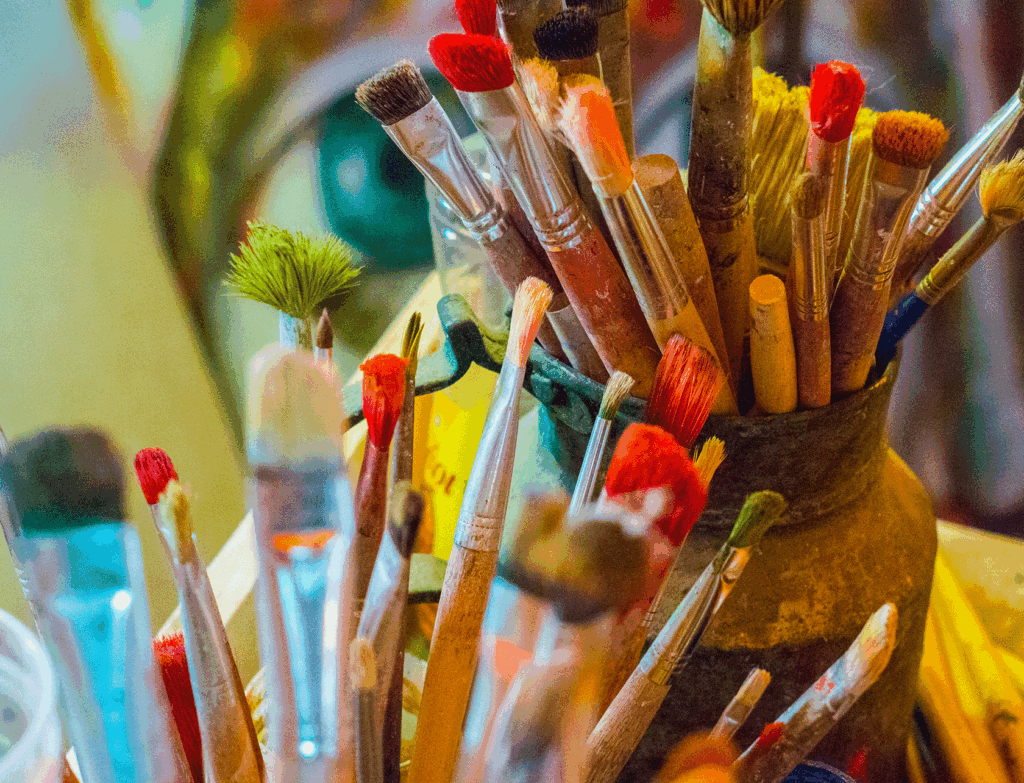
In today’s economic climate, raising the prices of your artwork is not just a matter of increasing your income—it’s about ensuring your survival and thriving as an artist. As inflation rates continue to rise globally, the cost of living has surged, affecting everything from food and housing to transportation and utilities.
This article explores why it’s crucial for artists to adjust their prices in line with inflation, supported by recent studies and statistics, and offers encouragement and resources for those seeking to navigate this challenging landscape.
The Reality of Global Inflation
Inflation is a persistent increase in the prices of goods and services, leading to a decrease in purchasing power. Over the past few years, we have seen significant inflationary pressures worldwide, exacerbated by factors such as supply chain disruptions, increased demand, and geopolitical tensions.
A report from the International Monetary Fund (IMF) highlighted that global inflation rates reached an average of 5.7% in advanced economies and 8.7% in emerging markets and developing economies in 2023. Specific sectors have experienced even steeper increases. For instance, the U.S. Bureau of Labor Statistics (BLS) reported that in 2022, the Consumer Price Index (CPI) for all urban consumers rose by 7.0%, the largest 12-month increase since 1982.
Rising Costs of Essential Goods
- Food: According to the Food and Agriculture Organization (FAO), global food prices surged by over 20% in 2022, with staple commodities like wheat, corn, and edible oils seeing significant price hikes. This dramatic increase impacts household budgets, forcing individuals to allocate more money to basic necessities.
- Housing: The housing market has not been immune to inflation. In many countries, housing prices have escalated. For example, the National Association of Realtors (NAR) in the U.S. reported that the median existing-home price for all housing types in December 2022 was $358,000, a 15% increase from the previous year. Rent prices have similarly climbed, straining the budgets of renters and homeowners alike.
- Utilities and Transportation: Energy prices have seen substantial increases as well. The U.S. Energy Information Administration (EIA) noted that gasoline prices in 2022 were about 25% higher than in 2021, and electricity prices rose by nearly 10%. These rising costs extend to utilities like heating and cooling, further burdening household finances.
The Impact on Artists
As artists, you are not isolated from these economic pressures. The increased cost of living affects your ability to sustain your art practice and personal life. Here are a few reasons why adjusting your prices is not only necessary but also justified:
- Material Costs: The cost of materials has risen significantly. From canvas and paints to digital tools and printing services, everything an artist needs to create their work has become more expensive. By raising your prices, you can cover these increased costs without compromising the quality of your work.
- Living Expenses: Just like everyone else, artists face higher living expenses. By increasing your art prices, you can ensure that your income keeps pace with these rising costs, allowing you to maintain a decent standard of living and continue creating.
- Value of Art: Art is an essential part of culture and society. By undervaluing your work, you contribute to a cycle where art is seen as less important. Setting appropriate prices reinforces the value of art and ensures that artists are compensated fairly for their contributions.
Studies Supporting Price Adjustments
Several studies and reports underscore the need for price adjustments in response to inflation:
- The Economic Policy Institute (EPI): EPI’s research shows that wages have not kept pace with inflation, meaning that even as people earn more nominally, their real purchasing power has diminished. For artists, this translates to the necessity of raising prices to match the true cost of living.
- The World Bank: In their 2022 report, the World Bank emphasized the global nature of inflation and its widespread impact on various sectors. Their analysis indicates that inflationary trends are likely to persist, reinforcing the need for proactive financial strategies, including price adjustments.
- Art Market Trends: The annual Art Basel and UBS Global Art Market Report revealed that high-end art markets have seen increased prices, reflecting a broader acceptance of higher valuations in the art world. This trend suggests that the market can bear price increases, especially when they are justified by rising costs.
Practical Steps for Raising Your Prices
- Assess Your Costs: Begin by calculating the increased costs of materials, studio rent, utilities, and personal living expenses. This assessment will give you a clear picture of how much you need to raise your prices.
- Communicate Value: Clearly articulate the value of your work to your audience. This includes the time, effort, and creativity involved in creating each piece. Transparency helps buyers understand the rationale behind price adjustments.
- Gradual Increases: Implement gradual price increases to avoid shocking your existing customer base. Regular, smaller increments can be more palatable and easier to justify.
- Market Research: Stay informed about market trends and what other artists in your niche are charging. This information can help you set competitive yet sustainable prices.
- Personal Experience: Don’t ever price your art based on what you would personally pay for it. Your purchasing power and perception has NOTHING to do with what your best potential clients will pay.
Encouragement and Resources
Raising your art prices to keep up with inflation is not just about maintaining your livelihood; it’s about valuing your work appropriately and ensuring the sustainability of your art practice. As you navigate this process, remember that you are not alone. Many artists face similar challenges, and there are resources available to support you.
For a comprehensive guide on pricing your art, I highly recommend getting a copy of my book, “How to Price Your Art“. It provides practical tips and strategies for setting prices that reflect the true value of your work and the current economic conditions.
Additionally, consider joining the Created to Thrive Artist Mentoring Program. This program offers ongoing support, encouragement, education, and consulting tailored to the needs of artists. Being part of a community that understands your challenges and offers expert advice can make a significant difference in your journey.
In an era of rising inflation, adjusting your art prices is not just a smart business move—it’s essential for your survival and growth as an artist. By understanding the economic forces at play and taking proactive steps to align your pricing with these realities, you can continue to thrive and create the work you are passionate about. Remember, valuing your art means valuing yourself. Don’t be afraid to set prices that reflect your worth and the quality of your creations.
For further reading and support, grab a copy of “How to Price Your Art” and join the Created to Thrive Artist Mentoring Program. Together, we can navigate these challenges and continue to flourish in our artistic endeavors.
Specific links for the studies cited in the article with the help of ChatGPT on why artists should raise their prices in response to global inflation, here are the sources:
- International Monetary Fund (IMF) Report on Global Inflation Rates:
- The IMF’s World Economic Outlook provides detailed analyses and projections on global inflation rates. For recent data on global inflation trends, including the specific figures for 2023, you can access the full report here: IMF Annual Report 2023 and World Economic Outlook, October 2023.
- U.S. Bureau of Labor Statistics (BLS) Report on Consumer Price Index (CPI):
- The BLS provides comprehensive data on consumer prices, including annual increases. For the specific 2022 CPI increase, visit the BLS website here: BLS Consumer Price Index.
- Food and Agriculture Organization (FAO) Report on Global Food Prices:
- The FAO regularly publishes updates on global food prices. The significant increase in food prices in 2022 can be reviewed in their publications. Access the detailed reports here: FAO Food Price Index.
- National Association of Realtors (NAR) Report on Housing Prices:
- For insights into the U.S. housing market and the notable increases in home prices, refer to the NAR’s reports. The latest data is available here: NAR Housing Statistics.
- U.S. Energy Information Administration (EIA) Report on Energy Prices:
- The EIA provides detailed statistics on energy prices, including gasoline and electricity. To explore the 2022 increases, visit: EIA Energy Prices.



Leave a Reply